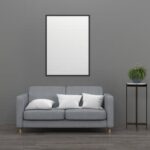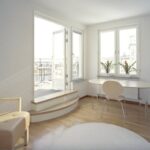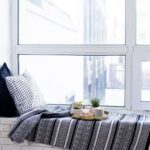In a competitive real estate market, the way you decorate and present your home can make all the difference when it comes to attracting buyers. Home staging has become an essential part of the selling process, allowing sellers to showcase their home’s best features and create a lasting impression on potential buyers. By following some simple strategies and techniques, you can transform your home into an irresistible space that stands out among other listings.
When it comes to selling a home, first impressions are crucial. Home staging is the art of preparing and arranging your home in a way that highlights its strengths and minimizes any shortcomings. In today’s competitive real estate market, staging has become increasingly important as it helps create an emotional connection with buyers by allowing them to envision living in the space.
A well-staged home can also help potential buyers visualize the full potential of the property. By strategically highlighting key elements, decluttering and cleaning, neutralizing color palettes, optimizing natural light, arranging furniture efficiently, accessorizing tastefully, enhancing curb appeal, and showcasing captivating photography online listings, you can significantly increase your chances of attracting serious buyers.
In this article, we will discuss each of these aspects in detail so that you can successfully stage your home to sell quickly and at a desirable price.
Showcase Your Home’s Best Features
Highlighting the key features of your home is crucial when it comes to attracting potential buyers. By showcasing these elements, you can create a lasting impression that will make your home stand out from the competition. Here are some tips on how to effectively showcase your home’s best features and attract buyers:
- Create a focal point: Identify the standout feature of each room and make it the focal point. This could be a fireplace, a stunning view, or an architectural detail. Arrange the furniture and accessories in a way that draws attention to this feature and showcases it in the best possible light.
- Emphasize functionality: Buyers want to envision themselves living in your home, so it’s important to highlight how each space can be used effectively. If you have a spacious kitchen, for example, set up a small dining area or add barstools to the counter to show that there is plenty of room for entertaining or family meals.
- Stage important areas: Pay special attention to rooms that are known to be deal-makers or deal-breakers for many buyers, such as kitchens and bathrooms. Clean and declutter these spaces thoroughly, remove any personal items, and consider adding fresh towels or flowers to create a welcoming atmosphere.
To effectively showcase your home’s best features:
- Create focal points in each room that draw attention.
- Emphasize functionality by showing how spaces can be used.
- Stage important areas like kitchens and bathrooms.
By following these tips, you can successfully highlight your home’s best features and attract potential buyers. Remember, creating a positive first impression is essential when it comes to selling your home in a competitive real estate market.
Decluttering and Cleaning
Decluttering and cleaning are crucial steps in creating a clean and inviting environment when decorating a home to sell. Potential buyers want to see a space that feels fresh and well-maintained, so it’s important to eliminate any clutter and dirt that could detract from the overall appeal of your home.
Start by tackling one room at a time, focusing on removing unnecessary items and organizing the remaining belongings. Begin with areas that tend to accumulate clutter, such as counters, shelves, and closets. Consider donating or storing items that are not essential to create a more streamlined appearance.
Once the decluttering process is complete, it’s time to deep clean your home. Pay attention to both the visible surfaces and hidden nooks and crannies. Dust all furniture and surfaces, including baseboards and light fixtures. Vacuum carpets or sweep hardwood floors thoroughly. In bathrooms and kitchens, scrub tiles grout lines, polish fixtures, and ensure countertops and appliances are spotless.
In addition to decluttering and cleaning the interior of your home, do not forget about the exterior. Curb appeal plays a significant role in attracting potential buyers. Trim overgrown plants or trees, remove any debris or weeds from the yard, power wash walkways or driveways to remove dirt or stains, and consider repainting your front door for an added pop of color.
By investing time in decluttering and thoroughly cleaning your home inside out before showcasing it to potential buyers you can create an inviting environment that leaves a lasting impression. A clean space allows potential buyers to envision themselves living in the home without distraction while also demonstrating pride of ownership.
Neutralize Your Home’s Color Palette
Choosing the right color scheme for your home is an important aspect of home staging when you’re looking to sell. By neutralizing your home’s color palette, you create a visually appealing space that allows potential buyers to envision themselves living in the space. In this section, we will discuss the importance of choosing subtle and appealing colors and provide some tips on how to achieve a cohesive look throughout your home.
When it comes to selecting a color scheme for your home, it is crucial to keep in mind that not all buyers have the same taste. Opting for neutral colors such as whites, creams, grays, and beiges can create a blank canvas that will appeal to a wider range of people.
Neutral colors also help make rooms appear larger and more open. Additionally, using light and neutral shades can also enhance natural light in your home, which is another key aspect of successful home staging.
To establish a cohesive color scheme throughout your home, try choosing one or two accent colors to complement the neutrals. These accent colors can be added through decorative accessories such as throw pillows, artwork, or area rugs. By sticking to a consistent color palette, you create a sense of flow from room to room and ensure that each space feels connected.
| Neutral Colors | Popular Accent Colors |
|---|---|
| White | Soft blues |
| Cream | Lavender |
| Gray | Sage green |
| Beige | Pale yellow |
By selecting a neutral color palette and incorporating soothing accent colors, you will create a warm and inviting atmosphere in your home. Remember to consider the existing features of your home, such as flooring or fixtures, when choosing your color scheme to ensure a cohesive look throughout. Neutralizing your home’s color palette is an effective way to make a positive impression on potential buyers and increase the chances of selling your home quickly.
Optimize Natural Light
To optimize natural light in your home, there are several strategies you can implement to emphasize brightness and openness. Natural light is highly sought after by buyers as it creates a more welcoming and spacious atmosphere. Here are some tips for making the most of the natural light in your home:
Keep windows clean
Dirty windows can block out a significant amount of sunlight. Regularly clean both the inside and outside of your windows to ensure maximum light penetration. Additionally, consider removing heavy curtains or drapes that may obstruct sunlight.
Use sheer or lightweight window coverings
Instead of heavy blinds or thick curtains, opt for sheer or lightweight window coverings that allow more natural light to filter into the space. These types of coverings still provide privacy while letting in ample sunlight.
Strategic furniture placement
Arrange furniture in a way that does not block natural light from entering the room. Avoid placing bulky pieces directly in front of windows and opt for open shelving or glass furniture that won’t obstruct light flow.
Mirrors
Mirrors are great for reflecting natural light and creating an illusion of a bigger space. Place mirrors opposite windows to bounce the sunlight around the room, making it feel brighter and more spacious.
Pale paint colors
Choose lighter paint colors for your walls as they help reflect natural light instead of absorbing it. Lighter shades such as whites, creams, or pastels can make a room feel more airy and open.
Add skylights or sun tunnels
If possible, consider installing skylights or sun tunnels in rooms with limited access to natural light, such as bathrooms or hallways. These additions can significantly increase brightness and create an open feeling in these spaces.
By implementing these strategies, you can optimize natural light in your home and create a bright and airy atmosphere that will appeal to potential buyers. Remember, the more natural light you can bring into your space, the more inviting and desirable it will appear in photos and during showings.
Furniture Arrangement
When it comes to selling a home, the way furniture is arranged can greatly impact the overall appeal and functionality of the space. Furniture arrangement not only maximizes space but also influences the flow of traffic within a room. Here are some tips on how to arrange furniture in a way that will make your home more attractive to potential buyers.
Start with a focal point
Identify the focal point of each room, such as a fireplace or a large window, and arrange the furniture around it. This creates a visual anchor and helps buyers envision how they can utilize the space.
Create conversation areas
Arrange furniture in a way that promotes conversation and social interaction. Place chairs facing each other or create groupings with sofas and accent chairs. This allows potential buyers to visualize themselves entertaining guests or spending quality time with their family in the space.
Consider traffic flow
Ensure there is enough space for easy movement throughout the room. Avoid blocking pathways and make sure there is ample space between furniture pieces for comfortable navigation. Buyers appreciate an open and spacious layout that allows them to move freely without feeling cramped.
Scale and proportion
Choose furniture that is appropriate for the size of each room. Oversized pieces can make a room feel crowded, while undersized items may make it look empty or under-furnished. Aim for balance by selecting furniture that complements the scale of the room, providing adequate seating without overwhelming or cluttering the space.
Remove unnecessary pieces
Consider removing any excess or oversized furniture that may impede flow or take up too much visual space. Minimalist staging often appeals to buyers as it gives them a clear view of the potential of each room.
Remember, when arranging furniture, it’s important to strike a balance between functionality and aesthetics. By creating an inviting and well-organized layout, you can highlight the potential of each room and make a lasting impression on potential buyers.
Accessorizing with Taste
Accessorizing with taste is an important aspect of home staging that can greatly enhance the overall look and appeal of your home. By adding carefully chosen finishing touches, you can create a welcoming and inviting atmosphere that potential buyers will find irresistible. Here are some tips and ideas for accessorizing your home to sell.
Keep it Simple and Minimal
When it comes to accessorizing, less is often more. You want to create a clean and clutter-free space that allows buyers to envision themselves living in the home. Avoid overcrowding surfaces with too many decorative items, as this can make the space feel cramped and overwhelming. Instead, select a few key pieces that complement the style of the room and add a touch of sophistication.
Add pops of color
While neutral colors are recommended for most aspects of home staging, accessorizing provides an opportunity to introduce small pops of color. This can be done through accent pillows, artwork, or decorative accessories like vases or candle holders. Choose colors that complement the existing color scheme of the room and add visual interest without overpowering the space.
Use Natural Elements
Incorporating natural elements into your accessories can bring warmth and texture to your staged home. Consider using fresh flowers or potted plants to add life and freshness to a room. You can also incorporate natural materials such as wood or woven baskets for a rustic touch. These elements help create a sense of connection with nature and make the space feel cozy and inviting.
Pay Attention to Scale
When selecting accessories, consider the scale in relation to the size of the furniture and the room itself. Oversized accessories can make a room appear smaller, while small accessories may get lost in larger spaces. Aim for a balanced composition by choosing accessories that are proportionate to their surroundings.
Accessorizing with taste can be the finishing touch that elevates your home staging to the next level. By keeping it simple, incorporating pops of color, using natural elements, and paying attention to scale, you can create a visually appealing and inviting space that will resonate with potential buyers. Remember, the goal is to create an environment that allows buyers to imagine themselves living in your home, so make sure your accessories enhance rather than overwhelm the overall look.
Curb Appeal
When it comes to selling a home, first impressions matter. The exterior of your property is the first thing potential buyers will see, and it can greatly influence their decision to explore further or move on to the next listing. That’s why enhancing the curb appeal of your home is crucial in attracting buyers and increasing its market value.
One important aspect of creating curb appeal is maintaining a well-manicured and maintained front yard. Invest time in landscaping and gardening to ensure that your lawn is healthy and vibrant. Trim overgrown bushes or trees, pull out weeds, and add some colorful flowers or plants to make the front of your house more visually appealing. A neatly mowed lawn and a tidy garden can go a long way in making a positive first impression.
Another way to enhance your home’s curb appeal is by giving your exterior a fresh coat of paint. Peeling or fading paint can make your home look neglected or outdated.
Choose neutral colors that will appeal to a wide range of buyers and consider painting your front door an accent color that pops against the rest of the house. Remember, potential buyers often drive by a property before scheduling a showing, so ensuring that the exterior looks well-maintained will entice them to want to see more.
Additionally, paying attention to small details can make a big difference in creating an inviting first impression. Ensure that all outdoor lighting fixtures are clean and functioning properly. Consider adding welcoming touches such as potted plants near the entryway or a new doormat with an attractive design or message. These small but thoughtful gestures can make potential buyers feel welcome even before they step foot interior-design-tips-anyone-can-benefit-from/” target=”_blank” rel=”follow noopener”>inside.
Creating curb appeal doesn’t have to break the bank – simple steps like tidying up the yard, giving the exterior a fresh coat of paint, and adding some finishing touches can significantly improve your home’s overall appearance. Remember, potential buyers often form their first impression within seconds, so take the time to make the exterior of your home as visually appealing as possible.
By investing in curb appeal, you’ll attract more potential buyers and increase your chances of selling your home quickly and at a higher price.
| Aspect | Curb Appeal Tips |
|---|---|
| Landscaping | Invest time in landscaping and gardening to ensure a healthy and vibrant front yard. Trim overgrown bushes or trees, pull out weeds, and add colorful flowers or plants. |
| Exterior Paint | Giving your home’s exterior a fresh coat of paint can make it look well-maintained and appealing. Choose neutral colors for the main house and consider an accent color for the front door. |
| Small Details | Paying attention to small details like clean and functioning outdoor lighting fixtures, potted plants near the entryway, or an attractive doormat can create a welcoming atmosphere. |
Captivating Photography
In today’s digital age, online listings are often the first point of contact between potential buyers and a home for sale. Captivating photography plays a crucial role in attracting buyers and showcasing your home’s best features. In this section, we will explore the importance of high-quality photography in online listings and provide tips on how to capture your home’s beauty through the lens.
When it comes to online listings, captivating photography is essential for grabbing the attention of potential buyers. With countless homes available on the market, visually appealing images can set your property apart from the competition. High-quality photographs that accurately represent your home’s unique features can evoke emotion and create a desire to see more.
To achieve captivating photography, it is important to invest in professional photos whenever possible. Professional photographers have the expertise to capture your home in its best light, using techniques such as proper lighting, composition, and staging. They can highlight key elements of your property, such as architectural details or stunning views, that will attract potential buyers.
In addition to professional photography, there are some DIY techniques you can utilize to enhance your online listing photos. Start by decluttering each room before taking any photographs – this will ensure a clean and visually appealing environment. When shooting interiors, open curtains and blinds to let in natural light, creating a bright and inviting atmosphere. Use wide-angle lenses or panoramic shots to showcase spacious rooms or outdoor areas effectively.
Remember that first impressions matter when it comes to captivating photography for online listings. Buyers often scroll through multiple properties before deciding which ones they want to visit in person. By investing in high-quality photographs that showcase your home’s best features accurately, you increase the likelihood of capturing their attention and generating interest in scheduling a showing or attending an open house.
Final Touches
In conclusion, the final touches are crucial in fine-tuning and preparing your home for open houses and showings. These last steps can make a significant difference in capturing the attention of potential buyers and generating offers. Paying attention to the small details will demonstrate that you have taken great care of your home and give buyers confidence in considering it as their future residence.
One important aspect of final touches is ensuring that everything is in proper working order. Fix any minor repairs or maintenance issues, such as leaky faucets or loose door handles. This shows buyers that your home has been well-maintained and instills trust in its overall condition.
Additionally, consider incorporating pleasant scents throughout your home. Light candles or use air fresheners to create a warm and inviting ambiance. Avoid overpowering scents that may be off-putting to some individuals. A subtle floral or clean scent can go a long way in creating a positive impression.
Lastly, make sure to remove any personal items and excess clutter from the space before each showing. Buyers want to envision themselves living in the home, so it’s essential to create an environment where they can easily imagine their own belongings fitting seamlessly into each room.
By focusing on these final touches, you will increase the chances of successfully selling your home. Remember, potential buyers want a well-presented property that feels welcoming and move-in ready. Putting effort into fine-tuning the details will ultimately pay off when it comes time to negotiate offers and close the sale on your home.
Frequently Asked Questions
How to decorate your house before selling?
When decorating your house to sell, it’s important to keep in mind that you’re trying to appeal to a wide range of potential buyers. Start by decluttering and removing personal items, as this will allow buyers to envision themselves living in the space. Neutral tones on the walls and furniture can create a blank canvas for buyers to imagine their own style.
Additionally, focus on maximizing natural light by opening curtains or blinds and arranging furniture to allow for easy traffic flow. Lastly, don’t underestimate the power of small details such as fresh flowers or a neatly arranged bookshelf. These simple touches can enhance the overall visual appeal of your home and make it more inviting to potential buyers.
How can I make my house look sellable?
To make your house look sellable, it’s crucial to focus on both its interior and exterior appearance. Begin by enhancing curb appeal, as first impressions are crucial when selling a property. This can involve tasks like mowing the lawn, trimming hedges, painting the front door, or adding potted plants at the entrance.
Inside, consider staging rooms with attractive but not overpowering furniture arrangements that showcase the functionality of each space. Take care of any minor repairs or updates that may catch a buyer’s eye negatively – such as fixing leaky faucets or replacing broken light fixtures. Finally, invest in professional cleaning services to ensure every corner is spotless and appealing.
How can I make my house look expensive when selling?
Making your house look expensive when selling doesn’t necessarily mean spending a fortune on renovations or high-end furnishings. Instead, focus on creating an ambiance that exudes elegance and sophistication while working within your budgetary constraints. One effective way is through strategic lighting choices – opt for warm and soft lighting fixtures which can give any room a luxurious feel.
Neutral colors on walls paired with pops of vibrant hues in decorative accents like pillows or artwork can yield an upscale look too. Pay attention to details like replacing outdated hardware with stylish knobs or handles and investing in quality window treatments that add a touch of grandeur. Lastly, don’t underestimate the impact of staging – professionally arranging furniture and incorporating high-quality accessories can truly elevate the perceived value of your home.

I’m thrilled to be your companion on this exciting journey through the world of home decor and design. With a passion for turning houses into homes and a keen eye for the finer details, I’m here to help you transform your living spaces into beautiful, functional, and meaningful havens.





